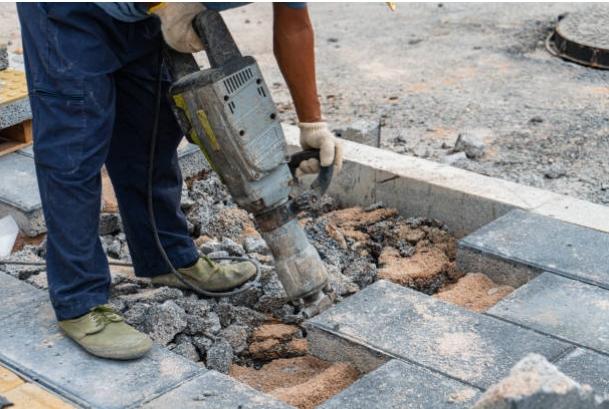
Safety Protocols and Techniques in Today’s Excavation Projects
Excavation projects are a fundamental component of construction and civil engineering, serving as the first step in building everything from skyscrapers to highways. However, these projects also carry inherent risks due to the nature of digging deep into the earth. Ensuring the safety of workers, bystanders, and the integrity of the surrounding environment is paramount in excavation projects.
This article will explore the essential safety protocols and techniques employed in today’s excavation projects, with a specific focus on the role of excavation contractors.
The Vital Role of Excavation Contractors
An excavation contractor is central to the successful execution of excavation projects. Their responsibilities encompass not only digging and earth-moving tasks but also the critical role of ensuring safety on the worksite. Here are four key areas where excavation contractors play a vital role in promoting safety:
1. Site Inspection and Assessment: Prior to commencing excavation, contractors must conduct thorough site inspections and assessments. They evaluate soil conditions, potential hazards, and the proximity of utilities. This initial assessment is crucial in determining the appropriate safety measures and excavation techniques to be employed.
2. Safety Planning and Risk Assessment: Excavation contractors are responsible for developing comprehensive safety plans that address potential risks associated with the project. These plans outline safety protocols, emergency procedures, and protective measures, ensuring that all workers are well-informed about safety requirements.
3. Equipment Selection and Maintenance: Choosing the right equipment for excavation is vital for safety. Excavation contractors must select machinery that suits the project’s needs and maintain it in optimal condition. Regular inspections and maintenance checks help prevent equipment failures that can lead to accidents.
4. Training and Supervision: Excavation contractors oversee the workforce, ensuring that all personnel are adequately trained and competent in excavation techniques and safety protocols. Supervisors are responsible for monitoring work practices, providing guidance, and addressing any safety concerns promptly.
Safety Protocols in Excavation Projects
To mitigate the risks associated with excavation, several safety protocols and techniques are implemented on today’s construction sites. These measures ensure the well-being of workers, the protection of the environment, and compliance with regulations. Below are some of the most critical safety protocols:
1. Utility Locating and Marking: One of the primary risks in excavation is accidentally damaging underground utilities like gas lines, electrical cables, and water pipes. Excavation contractors are responsible for accurately locating and marking these utilities before digging begins, using techniques such as ground-penetrating radar (GPR) and electromagnetic locators.
2. Sloping and Benching: The configuration of the excavation site plays a significant role in safety. Contractors use sloping and benching techniques to prevent cave-ins and soil collapses. The angle and depth of these slopes are determined by soil type and stability assessments.
3. Trench Boxes and Shields: In cases where sloping and benching may not be sufficient, contractors use trench boxes and shields to protect workers from cave-ins. These structures are placed within the trench to support the surrounding soil and prevent it from collapsing.
4. Shoring Systems: For deeper excavations, shoring systems such as hydraulic or mechanical supports are employed. These systems provide temporary structural reinforcement to the excavation walls, preventing collapses and ensuring worker safety.
5. Protective Systems: Excavation contractors mandate the use of personal protective equipment (PPE) for all workers on the site. This includes hard hats, steel-toed boots, high-visibility vests, and, when necessary, respiratory protection. Ensuring that all workers are properly equipped and trained to use PPE is crucial.
6. Soil Testing and Analysis: Regular soil testing and analysis help contractors understand the characteristics of the soil they are excavating. This information informs decisions about excavation techniques, sloping angles, and shoring requirements.
7. Emergency Response Plans: Excavation contractors develop comprehensive emergency response plans that outline procedures for handling accidents, injuries, and unexpected incidents. These plans include contact information for emergency services, first aid stations, and evacuation routes.
8. Environmental Protection Measures: Safeguarding the environment is equally important in excavation projects. Contractors implement erosion control measures, sediment ponds, and silt fences to prevent soil and debris from contaminating nearby water bodies and ecosystems.
Technological Advancements in Excavation Safety
As technology continues to advance, excavation safety benefits from innovative solutions that improve efficiency and reduce risks. Excavation contractors are increasingly integrating these technologies into their projects. Some notable advancements include:
1. Telematics and GPS: Many excavation machines are equipped with telematics and GPS systems that provide real-time data on equipment location, operation, and maintenance needs. This technology helps contractors track equipment usage, reduce downtime, and enhance overall safety by monitoring machinery and personnel in the field.
2. Drones and UAVs: Unmanned aerial vehicles (UAVs), commonly known as drones, are used for site surveys, progress monitoring, and safety inspections. Drones offer a bird’s-eye view of the excavation site, helping contractors identify potential hazards and compliance issues more efficiently.
3. Virtual Reality (VR) Training: Excavation contractors are increasingly using virtual reality (VR) simulations for training purposes. This immersive technology allows workers to familiarise themselves with excavation equipment, safety protocols, and emergency procedures in a controlled virtual environment, reducing the risk of accidents during real-world operations.
4. Enhanced Equipment Safety Features: Excavation equipment manufacturers are incorporating advanced safety features such as collision avoidance systems, blind-spot monitoring, and automatic shut-off mechanisms. These technologies help prevent accidents and protect workers in the vicinity of heavy machinery.
5. Mobile Apps and Software: Mobile applications and software solutions are available to assist excavation contractors in managing safety protocols and compliance. These tools streamline reporting, safety documentation, and communication among project stakeholders.
Challenges in Maintaining Excavation Safety
While safety protocols and technological advancements have significantly improved excavation safety, challenges persist in maintaining high standards on construction sites. These challenges include:
1. Complacency: Over time, workers may become complacent about safety protocols, especially on long-term projects. Excavation contractors must continually reinforce the importance of safety through training, reminders, and regular safety meetings.
2. Worker Turnover: High turnover rates in the construction industry can lead to a lack of experienced workers who are familiar with safety procedures. Proper training and supervision are essential to address this challenge.
3. Cost Pressures: Some contractors may feel pressured to cut costs, potentially compromising safety measures. It’s crucial for both contractors and clients to prioritise safety over cost savings to prevent accidents and injuries.
4. Inadequate Training: Improperly trained personnel are at a higher risk of accidents. Ensuring that all workers receive thorough training on safety protocols and equipment operation is essential.
5. Regulatory Compliance: Meeting ever-evolving safety regulations can be challenging. Excavation contractors must stay up-to-date with local, state, and federal safety requirements to avoid legal issues and fines.
Conclusion
Safety protocols and techniques in today’s excavation projects are essential for protecting the well-being of workers, preventing environmental harm, and ensuring project success. Excavation contractors play a crucial role in implementing and enforcing these safety measures, from site assessment and risk planning to equipment maintenance and worker training.
As technology continues to advance, excavation safety benefits from innovations such as telematics, drones, virtual reality training, and enhanced equipment safety features. These technologies improve efficiency and reduce risks, contributing to safer excavation projects.
Challenges in maintaining excavation safety persist, including worker complacency, turnover, cost pressures, inadequate training, and regulatory compliance. Addressing these challenges requires a commitment to safety from both contractors and clients.







